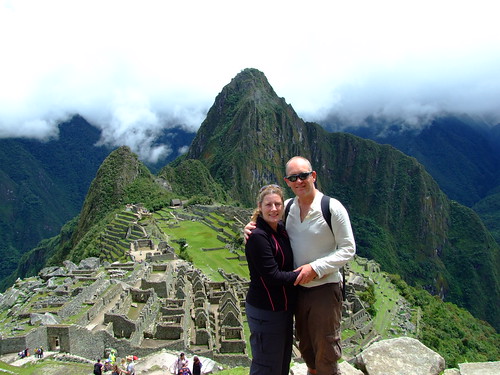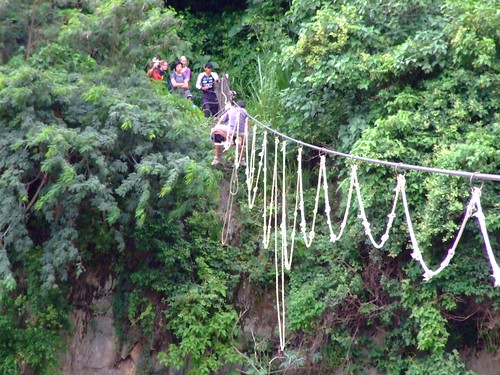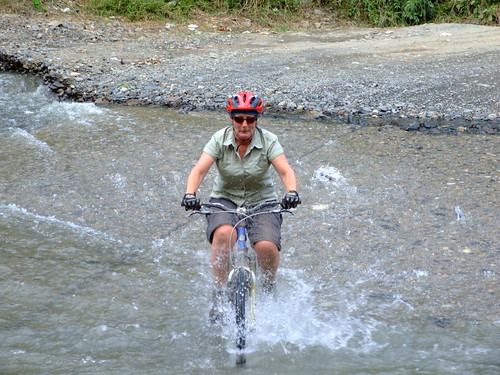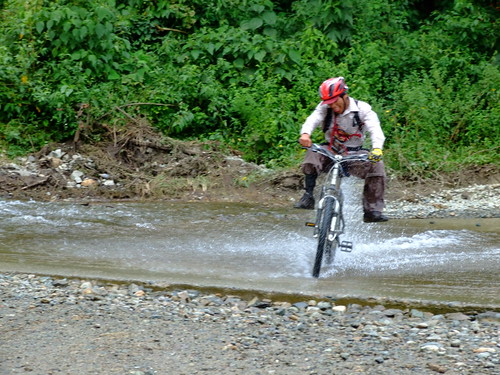There were a number of things that had long made me want to walk the Inca Trail: the idea of scaling the Peruvian Andes; of feeling as if you could reach out and touch the clouds with your hands; plus the thought of walking early one morning into the ruined city of Machu Picchu.
But there was a raft of other things that put me off. The horror stories about altitude sickness. The idea of camping, when night-time temperatures – even during the hiking season of May to September – regularly drop to below freezing. Finding yourself caught up in a peculiarly 21st-century commuter belt as you and up to 500 other people each day passed each other on a rubbish-strewn and erosion-stricken pathway.
Then last year I heard of the Mountain Lodges of Peru, a small company that had recently opened four Andean lodges, each a day's walk apart along a trail called the Salkantay Pass. Here was the chance to sleep in something approaching if not luxury then comfort, and to walk a trail upon which you might come across only one other group a day if you were unlucky.Added to which, this company seemed to take the risks of altitude sickness seriously, making you spend a day acclimatising at the first lodge (at 12,705ft) and from there doing a trial day trek to just over 14,000 ft to check that your body is up to the challenges ahead. It sounded just the trip for me.
We were to meet the rest of the group in the mountain city of Cuzco. It proved to be one of the most wonderful places I have ever visited. Clinging on to the mountainsides, its perilously steep cobbled streets were lined with pretty 19th-century houses with blue doors and balconies.
The foundations of many of these buildings were huge Flintstones-style rocks which once formed part of the earlier Inca city upon which Cuzco was built. What else made the place so special? Its pretty garden squares and rococo cathedral and churches.
Then there were the brightly dressed women down from the villages, leading a recalcitrant llama or two and carrying a baby (child or sheep) in a papoose over their shoulders.
There was the stunning Museo de Arte Precolombino, and the beautiful shops selling less precious versions of what was in the museum, bits of old Andean embroidery, and countless little carved stone animals – sheep and llamas, mostly.
And not forgetting the excellent restaurants and the pastry-producing nuns who sell their melt-in-the-mouth croissants for pennies at the Panaderia El Buen Pastor. But above all else it was just an atmosphere, an uplifting sense of serenity, that made it a difficult town to leave. Then again, that might have been something to do with the growing sense of dread I was feeling. And not just about the actual walking.
A group trip, my friend and I came to realise, as we gathered to meet our co-trekkers, is like an extended blind date. What if you don't get on? We were the only two English people, it transpired; the other seven were from the US. Our differences soon became apparent. Most obvious was our approach to altitude.
What was the highest altitude we had ever been to, the others asked. We were stumped. Well, what altitude did we live at? Stumped again. For Americans, it seems, altitude is something one knows about, and – in this context – talked about at length. They lived in high-up places like Denver (5,281ft) or went up mountains at the weekend.
In the UK, we told them, unless you are a mountaineer, you never thought about such matters. It transpired that we were also, by the group's calculation, woefully under-medicated. I know the importance of packing things like Dioralyte and Imodium, and I always have some paracetamol in my travel medical kit.
But suddenly we were with people who would put a high-street chemist to shame when it came to painkillers and God knows what else. We felt both afraid (was it really going to be that bad?), and relieved (well, if it was, we were with the right people). We drove for several hours, passing adobe villages, each house with a tiny cross on its rooftop flanked by terracotta animals, and women dressed in the traditional embroidery accessorised with many bits of different coloured knitwear. Some were wearing bowler hats, too, a sign of status. When we began to walk it was on an easy track, but already the views were epic.
The slopes were a scrubby brown colour, but above them were vast snowy mountains, one minute sharply drawn by sunlight, the next festooned with garlands of clouds. The first lodge, which we reached in about two-and-a-half hours, was situated on a high plain between two giant snowy peaks. We arrived just in time to watch the sun set, turning the snow as pink as bubblegum, and to watch the poor souls who were camping pitch their tents on a small campsite near the lodge. Even after a minute on the lodge terrace I felt as if my blood
was freezing.
The lodge, like all those we were to stay in, was architecturally stunning, built to reflect the environment with a multi-peaked roof and adobe walls. It was simply and comfortably furnished and, best of all, warm. The campers were long gone when we started out at 8am the next morning. Our two guides explained that campers generally became too cold to sleep, so start out as early as 4am. Most carried their own backpacks, too, which may not sound like much until you experience how hard it is even to transport your own weight at about 15,000ft. Today, the acclimatisation day, we would return to the same lodge, but for the days ahead our luggage would be carried by mule. But we had the "ambulance" with us, a saddled mule, should anyone find the altitude too much.
It proved to be a glorious day, as we walked up to a blindingly blue glacier lake, with giant condors circling high in the skies, looking tiny despite their 35ft wingspan. There were huge rococo cornices of snow hanging off the top of the slopes, as if a giant plasterer had gone crazy with the Artex, and beneath them, the icy glaciers crept and crunched their way imperceptibly down the slopes (sometimes you would hear one of them shift, or catch the deeper rumble of an avalanche).
Quickly we began to understand something of the mountains, the way the temperature can rise or fall with unbelievable suddenness depending on your altitude, as can your ease of breathing – just a few hundred feet making all the difference. A big part of the day was giving us psychological strength – the highest point of the trek ahead of us would be only 1,000 ft higher than we had gone today.
We had done this; we could do that, too. The next day would be, we were warned, the toughest. Within an hour of leaving the lodge we had climbed 1,000 feet – yes, my friend and I too were becoming altitude bores – following a serpentine celandine stream up through a series of flat, grassy plains cupped between the foothills of the mountains. Then we had an incredibly hard hour-and-a-half of ''switchbacks'', a series of zigzags and the only way to climb what at times feels like a near-vertical slope.
Physically they are tough, but mentally they are even tougher as at times, turning back on yourself again and again, it feels as if you are going nowhere. Even so, the isolation that I felt – a glorious kind of oneness in which there is just you and the breathtaking natural world – made it bearable. Finally we reached another much higher plain where we were to have a break.
And there, above us, was a truly magical thing – a rainbow encircling the sun, the sky within it a darker and more luminous blue than the sky outside it. We continued, climbing higher still, the ground now rocky scree and the temperature turning from hot to freezing.
However fit you are, you have to stop and take regular short breaks (but not for so long as to let your body temperature fall). But no one in the group, who ranged in age from twentysomething to sixtysomething, was suffering from any altitude sickness, thank goodness.
Every so often a couple of locals passed, leading mules laden with everything from gas canisters to giant boxes. Their mouths and teeth were black from coca leaves, which they chew for energy and to alleviate altitude sickness.
Clamped to their ears there was often a tinny transistor radio; sometimes the women spun wool as they walked, spindle in one hand, wool in the other. We reached the highest point, at 15,340ft, and had our photos taken at the Salkantay Pass sign, but it was far too cold to linger, and we were eager to begin to make our way down the other side.
The next two days brought many more wonders, like our walk through the cloudforest, a kind of jungle that is, as its name suggests, so high up as to be in the clouds. Here we saw countless orchids, myriad butterflies, and an iridescent hummingbird slurping nectar from a flower right by the path. Finally, on our last day, we glimpsed the reason we were all there: Machu Picchu, on a mountain directly in front of us.
Yet suddenly it dawned on us that Machu Picchu wasn't why we were there after all; it was the trek itself that had become the raison d'être of our trip. When we visited Machu Picchu the next day (the only disadvantage of this trail is that you can't actually walk into the ruins), we found it amazing but somehow beside the point. It sounds pretentious, but somewhere back there, up in the mountains, we experienced something else, something other, and none of us will ever forget it.
resource: telegraph.co.uk













